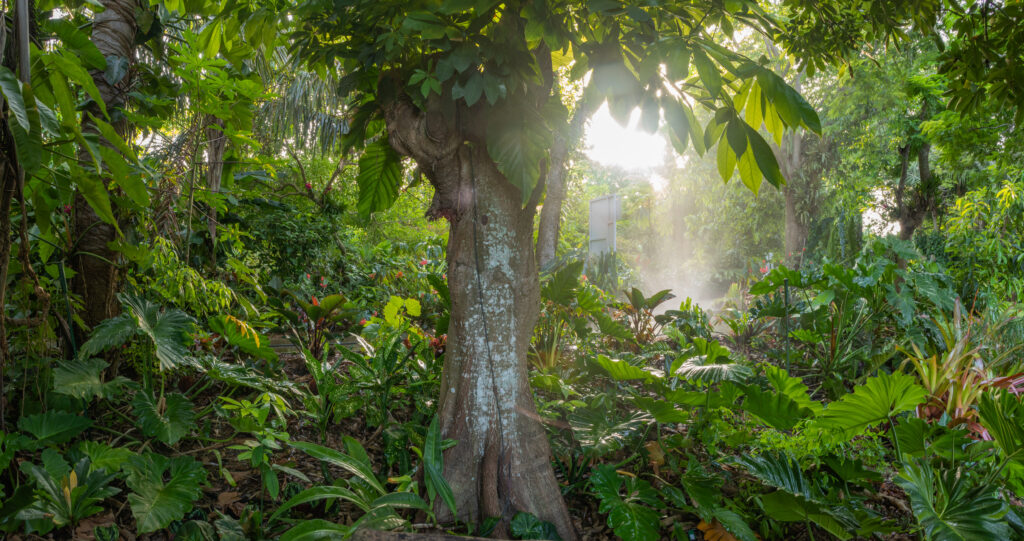Why copy the landscape design of another culture?
That’s a question the pioneering Brazilian landscape architect Roberto Burle Marx (1904-1994) asked himself. Burle Marx tossed aside European influences and imports and taught his fellow Brazilians to see the beauty in their native species. He enlivened cityscapes with bursts of color from Brazilian plants, and he drew inspiration from art movements such as Cubism and Brutalist architecture with its dependence on concrete and geometric shape.
The Kathleen and Scott Kapnick Brazilian Garden, designed by Burle Marx protégé Raymond Jungles, reflects the famed architect’s visionary work. Burle Marx introduced a wide range of native Brazilian plants to gardeners, including nearly 50 species, cultivars, and varieties named in his honor. The Kapnick Brazilian Garden features many of these namesake plants along with significant collections of South American palms, aroids and bromeliads.
The winding, concrete pathway flanks a water feature and takes guests to a brightly colored mosaic wall created by the famed designer himself. It is the only such Burle Marx piece on permanent display in the United States.




